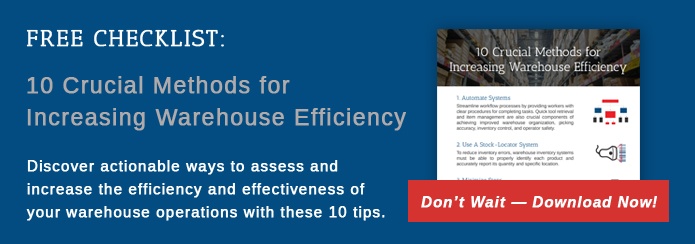 The warehouse is the heart of many businesses. If you or one of your customers is considering purchasing material handling equipment or Automated Storage and Retrieval Systems (AS/RS), you're immediately confronted with the question of how to control that equipment and integrate it into the rest of the operation. Welcome to the world of Warehouse Control Systems (WCS). The knee-jerk reaction is to use the control systems provided by the OEM, but these are often limited. Whether they are insufficient to control the complex processes of the modern logistic-optimized warehouse or they are incompatible with the warehouse management systems being used, limited or non-existent warehouse control systems can cause issues.
The warehouse is the heart of many businesses. If you or one of your customers is considering purchasing material handling equipment or Automated Storage and Retrieval Systems (AS/RS), you're immediately confronted with the question of how to control that equipment and integrate it into the rest of the operation. Welcome to the world of Warehouse Control Systems (WCS). The knee-jerk reaction is to use the control systems provided by the OEM, but these are often limited. Whether they are insufficient to control the complex processes of the modern logistic-optimized warehouse or they are incompatible with the warehouse management systems being used, limited or non-existent warehouse control systems can cause issues.
That's why it's important to not only choose the right combination of equipment to match the needs of your warehouse, but also to ensure the control systems are paired with that equipment to maximize efficiency. Every system should work seamlessly with the warehouse management systems being used in the facility.
The Challenges of Equipment Installation
Equipment installation is a daunting undertaking for many companies with complex supply chains because there is no guarantee the equipment being installed will work natively with the existing WMS. In fact, most warehouse management systems don't have control capabilities, which means more vendors are brought in and more points of integration are required.
The added complexity here is not only an IT staff's worst nightmare; it can lead to long installation processes, hard-to-diagnose technical issues, and excess cost. It's also a barrier to purchase for many warehouses. A new equipment setup might improve efficiency, but if it requires heavy integration with the existing software, the learning curve gets very steep, very quickly – which is why integration of management and control systems in a warehouse before equipment installation can offer such striking benefits.
Limits of OEM Control Systems
A typical OEM control system is limited. It works in a closed system to optimize and automate certain functions of the equipment and often only in certain situations.
The reality is that most equipment isn't prepared for integration into more complicated environments when it first comes from the OEM. The diversity in the market and number of resources required to make this a reality is too great. Outside vendors are called on to integrate these systems, and even then, the process can lead to greater challenges than expected (or desired).
New equipment is frequently purchased by companies that are actively improving their supply chain. They install new automation controls because they want inventory access to be as seamless as possible. But if those new controls don't work in tandem with the Warehouse Management Systems that actually track inventory and help to streamline ordering, what good are they?
It can create greater challenges than it solves.
Benefits of Properly Selected Control Systems
It all comes back to selection and integration optimization. Having a single system that supports both warehouse management and control systems is a huge part of this. Not only can you improve your existing workflow processes, manage inventory more efficiently, reduce excess stock, and streamline your labor expenses with smarter warehouse management systems; but that same system can talk to your control systems and automate the physical equipment that runs your warehouse.
You can find the stock faster and then move it to where it needs to be.
Primarily, this means workflow and equipment processes are integrated in a way that is currently difficult or impossible for most systems. Instead of having a half-dozen different systems talk to each other through custom integrations, you have a single system that has been designed and optimized to work with your equipment setup.
In the end, this means a more streamlined, all-in-one installation from dealer to customer, providing:
- Faster setup of new equipment without the need for outside vendors
- Less pushback from IT and warehouse staff when switching systems
- Streamlined setup for new systems without ongoing integrations and updates
- A single setup that can be maintained and updated more efficiently
For OEM dealers, this creates a faster and more efficient solution for customers. For business decision makers, it means a leaner, more effective supply chain with warehouses in which every system communicates as it should.
The Right Control Systems for Your Warehouse
If you operate a warehouse or you supply equipment solutions, the right warehouse control systems are incredibly important. By streamlining the process, reducing the number of outside vendors, reducing the amount of headache in installation and maintenance, and building a smarter system, you can reap substantial benefits. That means a smarter warehouse with fewer headaches along the way.
We have access to greater technology than ever before, but it is only as good as its implementation. By planning for every possibility, maximizing the effectiveness of the software you select, and matching control systems with the equipment being installed, you can get the most out of your system.




